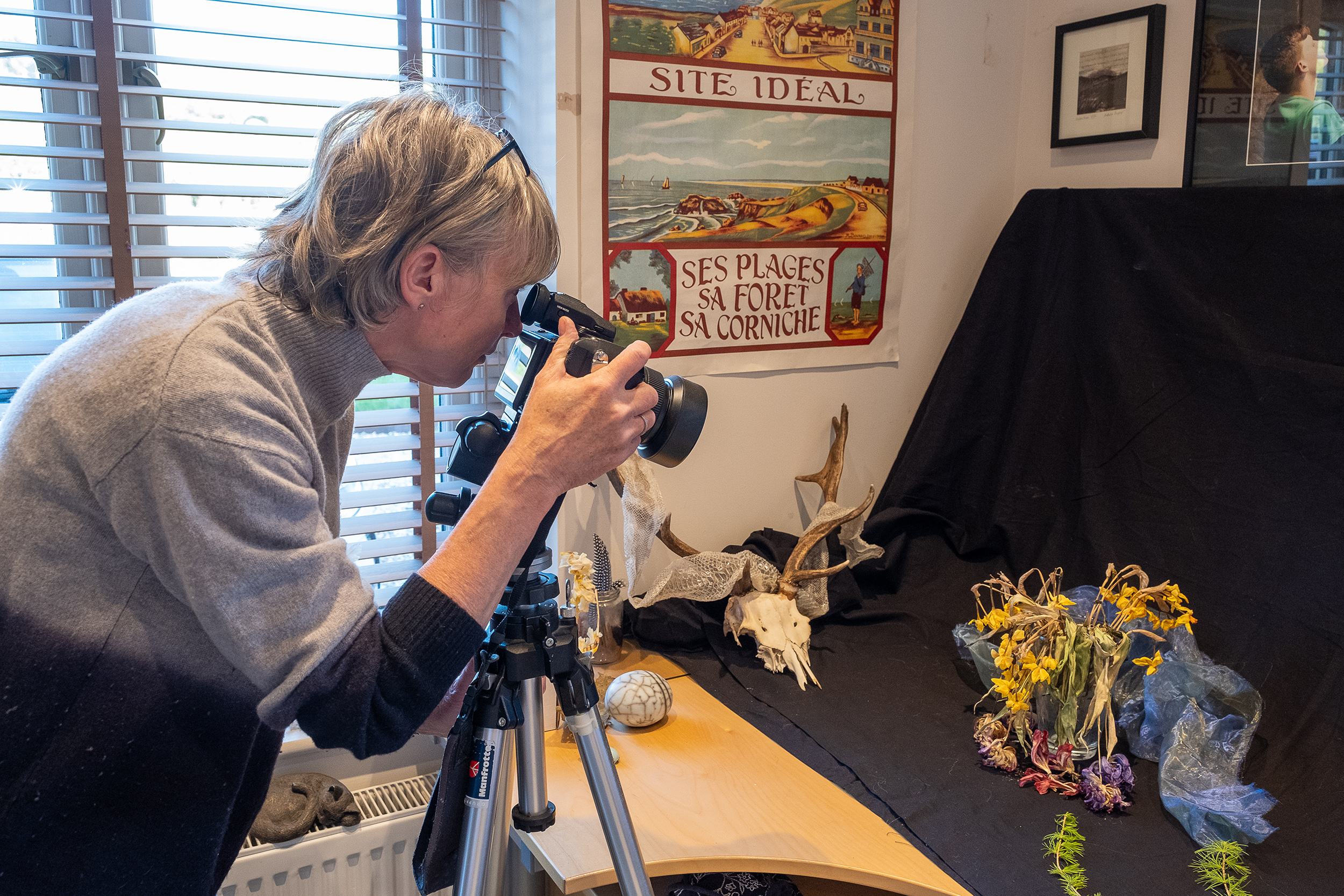
Our COVID-19 Case Studies explore the different ways the photographic community is working and staying connected through the pandemic. If you would like to submit a Case Study get in touch via chat@redeye.org.uk for more information.
Rachel Wallace is an award winning photographer and one of the first funeral photographers in the UK. She studied Photography Art at Central St Martins and the University of Westminster (MA) and has gone on to exhibit in London, Amsterdam and Korea, alongside being published in magazines and online galleries. Below Rachel tells us a bit more about her practice and the effect the pandemic has had on her work:
I use photography as a means of expressing my fascination and understanding of ourselves and the life cycles of the natural world. I work from my studio in the midst of the Chiltern Hills and woods, which provide much of the inspiration for my personal work. As I work I gather 'treasures' which become part of a collection from which I create installations and still lives exploring our engagement and understanding of life and death by highlighting the beauty of decay as well as that of natural living things.
Some twelve years back I changed direction from photographing weddings and portraits and began to focus on funeral photography. I felt there was a need for it as an aide memoir of a monumental event. But even more than that, photographs of a funeral service present a focal point through which to work through grief.
For me, death is a part of life. Both my commercial and personal work aim to help take away the fear many of us have towards the end of life, and to help us accept and understand it as a natural and inevitable process.
How are you adapting your work during the pandemic?
Surprisingly funeral work dried up as funeral attendees were limited to immediate family only and sometimes just one or two in addition to the funeral directors. Later on people requested live streaming for their funerals rather than photographs.
I also exhibit and sell work from my studio, so this now being closed, like many others I needed to set up an online shop on my website, improve the site and attempt more marketing and social media, which I’m not good at. For me, photography is all about the end product - the print. Seeing an online image just isn’t the same as seeing and being close to the real thing. I do miss showing and selling my work and talking to people about it. Even when not selling I get a buzz from talking with those who understand it and all artists need that positive feedback to help them cope with the doubts that creep in so often, and more often when working alone and isolated.
I decided to use the time and headspace to focus on exploring, experimenting and engaging with other photographic practices. I followed a variety of online courses including pinhole photography and strangely, a course on pop up books, which I thought I could incorporate my photographs into.
Has the new context inspired you to try anything innovative that you haven’t tried before? If so, what?
From the techniques I learned from the pop-up book course I started to fold and crease my photographs, then paint, stitch and sew on them. I began to desecrate my “perfect prints” and learned to enjoy the new creations coming from this.
How are you finding online life?
I enrolled on some online learning courses such as a MOMA course on the Theory of Photography to refresh my MA knowledge and also attended interactive online courses on Photoshop and Lightroom, Portrait photography, and calibrating my printer. I still attend lectures and day seminars and find these ways of learning relaxing and unpressured compared to those in 'real life'.
What are your current and future plans for making, showing, distributing work?
I have definitely changed my approach to working now that I have been able to relax and experiment with ideas and techniques I would not previously have had mental space to attempt. I did a half-day course in lithography and loved it; I’d like to do a lot more with my photographs and lithographic printing to produce a more imperfect feel to the work.
Commercially I need to improve my funeral photography website and market myself more as work is now coming in. I have been writing a few articles for funeral and photographic publications and will be speaking at artdotearth conference in November.
How are you procrastinating or distracting yourself from any stress?
For me, photography is how I cope with stress or distract myself from issues. When a friend died the first thing I did was to take my camera and go into the garden. When I am stressed or bothered I go for a walk with my camera or phone. Photography is how I express myself - it's my language. If you understand my photography then you will understand me.
See more from Rachel on her website https://www.racheljwallace.com/ and instagram @racheljayw
Also you can have a look at Rachel's funeral photography services here https://www.farewellphotography.co.uk/
